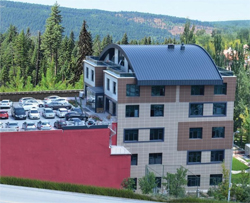Requests Can Be Made Mobile via Pdas and Tablet Pcs
Physicians and nurses introduce the patient to the system by reading the patient bracelets via barcodes or RFID readers before going into the operation. The necessary information of the patients is reached, and new data entries or queries are made by using the SisoHIS Operating Room Module. Requests regarding the patient such as laboratory, x-ray, blood, and medication are made mobile via PDAs and tablet PCs, and all processes related to these requests can be monitored mobile.
Operation List and Shift Schedule Are Created via the Module
Appointments are created for the consultation requests, the approval processes of the appointments are monitored and the post-operative information is recorded via the SisoHIS Operating Room Module. Depending on the preference of general or local anesthesia during operation, an operation list is created for the departments. The information of the team participating in the operation is recorded and their lists are created. The surgical team is created by being selected automatically from the lists according to the operation group. The shift schedule is created by organizing the work schedule of the operating rooms-delivery rooms, anesthesiologists, nurses and support staff by using the module.
Authorized Users Can Follow the Stages of the Applied Treatment in Real Time
Using the Operating Room Module, physicians can monitor the treatment practices they recommend with the help of their personal computers from any place that has internet access. They can control the service provided to critically ill patients during important times such as drug intake, care, and control times.
Negative Events Are Prevented by Monitoring via the Rfid Bracelets with a Protective Approach
By installing RFID bracelets to newborn babies and their mothers, adverse events such as the mixing of babies that may be encountered in large hospitals are prevented. The RFID tag shows the position of the infants in the hospital in real time.
Report Lists Are Available According to Disease Codes and Disease Groups
Information about previous operations of patients can be queried and reported according to multi-choice query criteria via the Operating Room Module. Various statistics can be generated daily, weekly, monthly or between desired date zones for the operation records and these statistics are presented to the user in detailed reports.
Surgical Supplies and Medicines Are Supplied by Online Request
Entry-exit-inventory-request transactions related to the materials used by the operation and delivery team can be made and service records can be kept. Materials used in the operating room and delivery room are automatically deducted from the material store. Operating Room Module works integrated with Pharmacy Module and Blood Bank Module.
Applied Procedures Can Be Viewed In Detail
In the Operating Room Module, the measured operation values of the patient, the notes on the course of the operation and the results of the operation are recorded. Operating room information is kept for birth rooms, anesthesia unit, and wake-up rooms. Operation and delivery procedures can be applied selectively in accordance with package application requirements. Applied processes, materials, sets and package lists can be displayed on the system in detail.
Score and Price Calculations Are Made Automatically on Surgeries or Deliveries
Operations carried out in the operating-delivery rooms are reflected in the patient's financial records in detail. Points and prices are calculated automatically in all surgeries and births. Surgical cost analyses, case volume analyses, surgical efficiency analyses, room usage analyses, and data analyses to monitor anesthesia complication rates are created for the hospital by using the Operating Room Module and can be reported on request.
The Patient's Information Flow Is Displayed on Lcd Tvs
The patient's information flow is displayed on the LCD TVs in the waiting rooms of the operating-delivery rooms. The conditions of the patients who will have/had/are having operation during the day can be followed up by the relatives of the patients via this screen. The data displayed on the screen include the name of the surgeon, department and operating room, the information of the patient or the information about the infant, the time of operation, the estimated waiting time, the postponement status, the determined visitor hours, location/direction information, informative/warning messages, and the laboratory result status. All this information is managed by the information management system.















